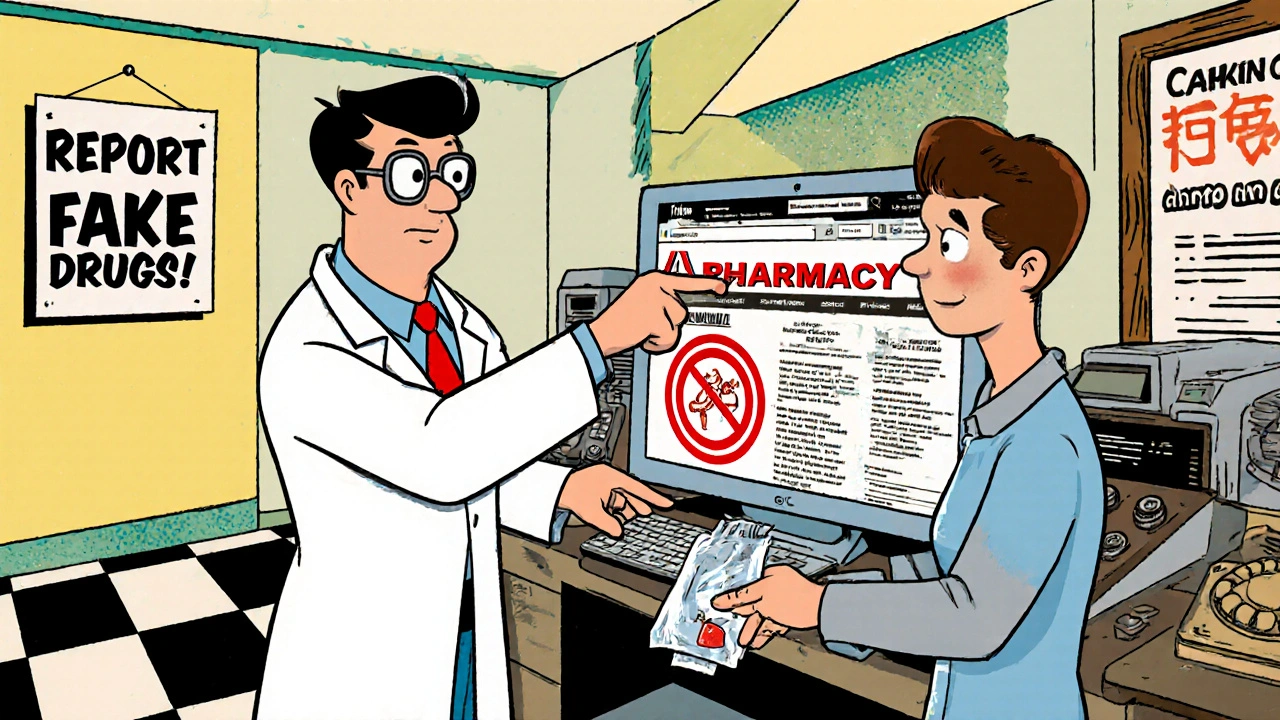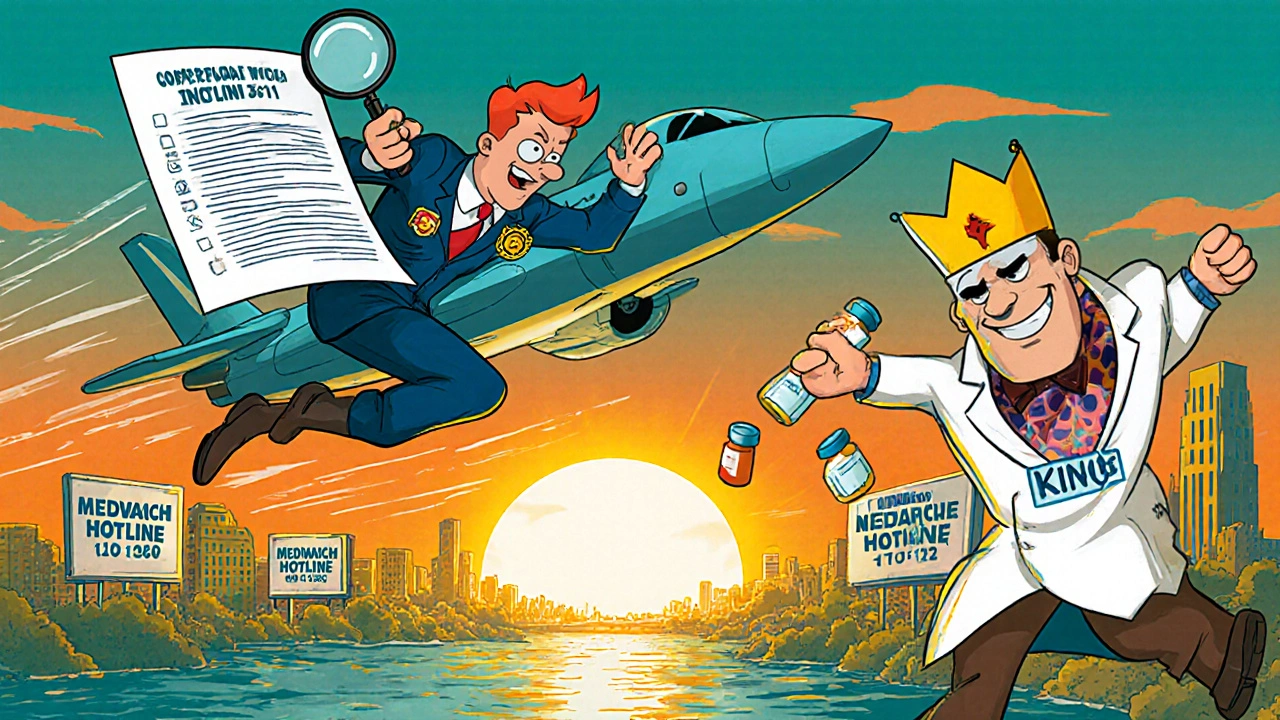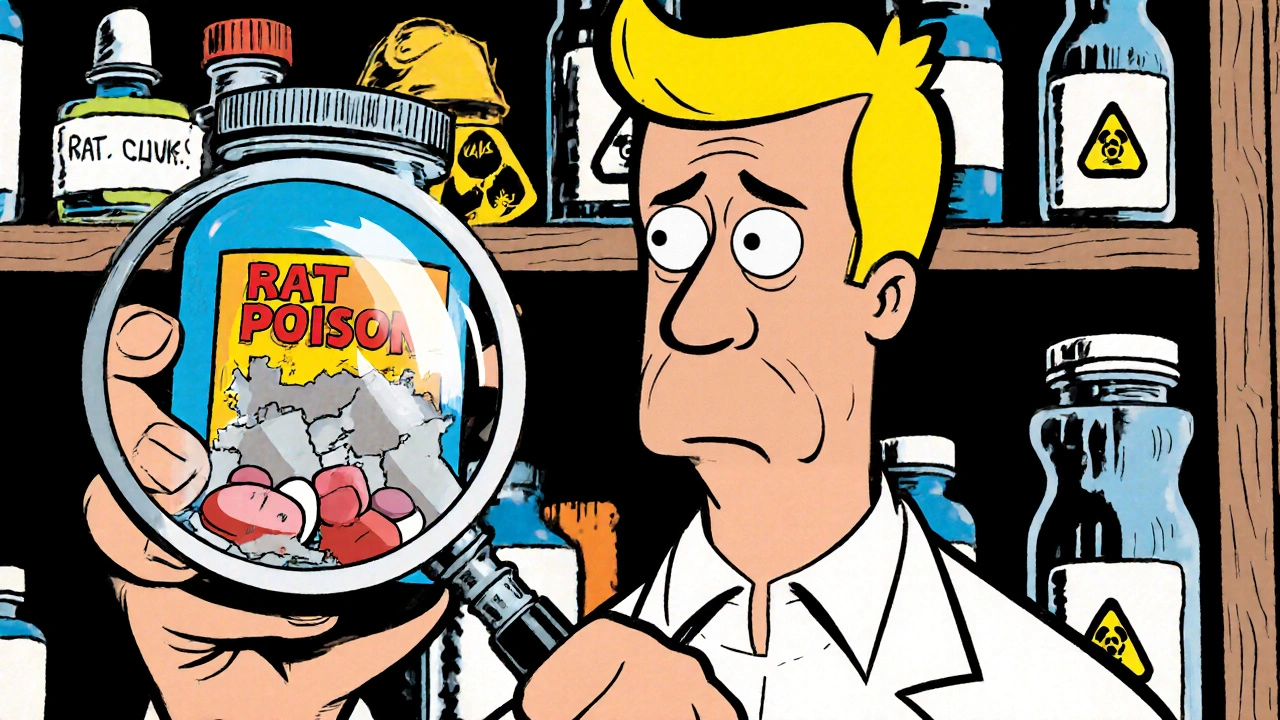Every year, millions of people around the world take medicines that don’t work-or worse, are dangerous. Counterfeit or tampered medications are not just rare mistakes. They’re a growing global threat. The World Health Organization estimates that 1 in 10 medical products in low- and middle-income countries is fake or substandard. Even in the U.S. and Canada, online pharmacies and shady suppliers are slipping counterfeit pills into the supply chain. These aren’t just expired drugs. They might contain the wrong dose, toxic chemicals, or nothing at all. If you suspect a medication is fake or has been tampered with, reporting it isn’t just helpful-it’s lifesaving.
What Counts as a Counterfeit or Tampered Medication?
A counterfeit drug is made to look like the real thing but isn’t. It could have the wrong active ingredient, no ingredient at all, or harmful fillers like chalk, paint, or rat poison. Tampered medications are real products that have been altered-maybe the packaging was opened and refilled, the expiration date changed, or the seal broken and resealed.
Here’s what to watch for:
- Packaging that looks blurry, misspelled, or different from what you usually get
- Pills that are the wrong color, shape, size, or have odd markings
- Medication that doesn’t work the way it should-or causes unexpected side effects
- Missing or altered batch numbers, expiration dates, or manufacturer details
- Seals that don’t match, are broken, or look like they’ve been glued back
- Buying from websites that don’t ask for a prescription, or offer drugs at prices way below market rate
Don’t assume it’s just bad luck. If something feels off, it probably is.
What to Do Immediately After Finding a Suspicious Medication
Don’t throw it away. Don’t take it. Don’t give it to someone else.
First, keep the medication and all its packaging. This includes the bottle, blister pack, box, leaflet, receipt, and even the online order confirmation if you bought it online. These are your evidence. Don’t wash the pills or remove labels. Even fingerprints or dirt on the packaging can help investigators trace where it came from.
Take clear photos:
- Front and back of the box
- Close-up of the pill itself
- Batch number and expiration date
- Any broken seals or tampering signs
- The receipt or website screenshot
Store the medication in a safe place-like a sealed plastic bag in your fridge if it’s temperature-sensitive. Don’t let anyone else handle it. If you’ve already taken some, write down when, how much, and what symptoms you experienced. This information could help prevent others from being harmed.
How to Report Counterfeit Medications in the U.S.
In the United States, the Food and Drug Administration (FDA) runs the MedWatch program. It’s the main system for reporting fake or dangerous drugs. You don’t need to be a doctor or pharmacist to use it.
There are two easy ways to report:
- Online: Go to fda.gov/medwatch and fill out Form 3500. It takes about 12-15 minutes. You’ll need the product name, manufacturer, batch number, and your contact info (optional but helpful).
- By phone: Call 1-800-FDA-1088. A representative will walk you through the report. If you’re uncomfortable giving your name, you can report anonymously.
If you’re a healthcare provider, pharmacist, or work in the drug supply chain, you’re legally required to report suspected counterfeits within 24 hours under the Drug Supply Chain Security Act (DSCSA). You must use the CDER NextGen 3911 platform or email Form FDA 3911 to [email protected].
For illegal online pharmacies or suspicious sales, you can also report to the DEA’s RxAbuse Tip Line at (571) 324-6499 or online at dea.gov/diversion. This is especially useful if you suspect someone is selling prescription drugs without a license.
How to Report in Canada
In Canada, reporting depends on what kind of drug you’re dealing with.
If you’re a pharmacist and suspect a forged prescription-for example, someone using a fake script to get opioids or controlled substances-you must report it to your provincial drug program. In Ontario, send details (prescriber name, drug name, copy of the script) to [email protected].
If you suspect a controlled substance (like oxycodone, fentanyl, or Adderall) has been stolen or diverted, you must report it to Health Canada’s Office of Controlled Substances within 10 days using their official form (CS-GD-005).
For general counterfeit medications, you can also report to Health Canada’s Adverse Reaction Reporting system at medeffect.canada.ca.

What Happens After You Report?
Once you report, the agency reviews your information. If it’s flagged as high-risk-like insulin, heart medication, or cancer drugs-they’ll act fast. The FDA says reports submitted within 24 hours lead to product removal 4.2 times faster than reports made after 72 hours.
Investigations may include:
- Tracking the batch number back to the manufacturer or distributor
- Testing the pills in a lab
- Shutting down illegal websites
- Coordinating with customs to stop shipments
- Issuing public alerts
Between 2015 and 2022, the FDA removed over 2,300 counterfeit drug products from the market thanks to public reports. One pharmacist in Texas reported a fake insulin product in March 2023. Within 11 days, the FDA traced it to 142 affected lots and pulled them all.
But not every report gets a follow-up. Many consumers report frustration-67% of those unhappy with MedWatch said they never heard back. That’s why it’s important to keep your own records. If you don’t get a confirmation email within 10 days, call the FDA again.
Why Your Report Matters
Counterfeit drugs aren’t just a problem for you. They’re a public health crisis. The global market for fake medicines is worth $205 billion. Online pharmacies that don’t require prescriptions make up 96% of the market, according to the National Association of Boards of Pharmacy.
When you report, you’re not just protecting yourself. You’re helping stop a chain reaction. One fake pill can lead to a hospitalization. One unreported batch can poison hundreds. Experts say reports with batch numbers and clear photos are 68% more likely to lead to a successful investigation.
Pharmacists, nurses, and doctors are trained to spot red flags: prescriptions written in different ink, call-back numbers that match the patient’s own phone, or orders for 10 times the normal quantity. But you-the patient-know your body best. If your blood pressure pill suddenly doesn’t work, or your asthma inhaler feels different, trust that instinct.
What You Should Never Do
Don’t:
- Throw the medication away before reporting
- Take more of it hoping it’ll work
- Give it to a friend or family member
- Try to return it to the pharmacy without reporting first
- Post photos of it on social media without reporting to authorities
Posting online might raise awareness, but it can also alert criminals to destroy evidence. Always report to official channels first.

Future Improvements and What’s Coming
The FDA is testing a new smartphone app that lets you photograph a suspicious pill and automatically pull the batch number, expiration date, and manufacturer info. In tests, it cut reporting time from 14 minutes to under 4 minutes.
By 2027, global health agencies aim to connect all reporting systems so a fake drug reported in Canada can trigger alerts in the U.S., the U.K., and India. The WHO is already using AI to scan images of packaging and catch fakes with 94% accuracy.
But until then, the system still relies on you.
Frequently Asked Questions
Can I report a counterfeit medication if I bought it online?
Yes. In fact, most counterfeit drugs come from online sources. Report it through MedWatch in the U.S. or Health Canada’s system in Canada. Include the website URL, order number, and any screenshots. The FDA and DEA actively track illegal online pharmacies.
Do I need to know the exact batch number to report?
It helps a lot-but you don’t need it to report. If you can’t read the batch number, take a clear photo and describe what you see. Even vague reports can trigger investigations, especially if multiple people report the same product.
Will I get in trouble if I report a fake drug I bought without a prescription?
No. Reporting a counterfeit medication is protected under public health laws. Authorities focus on stopping the supply chain, not punishing patients. Your report is confidential, and anonymity is allowed.
What if I already took the fake medication?
Contact your doctor immediately. Even if you feel fine, some counterfeit drugs cause delayed harm. Then report the product to MedWatch or your national health agency. Include details about when and how much you took. This helps track patterns and protect others.
Can I report a medication that just seems weak or ineffective?
Yes. If a medication doesn’t work as expected, especially if it’s a critical drug like insulin, blood thinners, or seizure medication, report it. It could be counterfeit, expired, or improperly stored. The FDA investigates therapeutic failure as part of its product quality monitoring.
Next Steps: What to Do Today
Don’t wait for someone else to act. If you’ve ever doubted a medication, now is the time to check.
- Go through your medicine cabinet. Compare your pills to images on the manufacturer’s website.
- If you bought medication online, check if the site is verified by the National Association of Boards of Pharmacy (look for the VIPPS seal).
- Save the contact info for MedWatch (1-800-FDA-1088) or Health Canada’s MedEffect in your phone.
- Talk to your pharmacist. Ask them how they verify their supply chain.
Counterfeit drugs thrive in silence. Your voice stops them.


Kevin Wagner
November 13, 2025 AT 01:16This is the kind of post that makes me want to scream at the top of my lungs-literally. I’ve seen people buy pills off Instagram like they’re buying sneakers. One guy I know took fake Adderall and ended up in the ER with his heart doing the cha-cha. You think it’s just a bad batch? Nah. It’s a war zone out there. And yeah, I’m mad. But I’m also reporting every sketchy site I find. If you’re reading this and you’ve got a weird-looking pill in your cabinet-STOP. Take a photo. Call 1-800-FDA-1088. Don’t wait. Don’t hope. Act.
gent wood
November 14, 2025 AT 13:04Thank you for this comprehensive guide. I work in community pharmacy here in the UK, and we see the fallout of counterfeit meds daily-especially with diabetes and hypertension patients who can’t afford brand-name drugs. The packaging often looks convincing, but the batch numbers don’t match the manufacturer’s database. We’ve started keeping a log of suspicious items and submitting them to the MHRA. It’s not glamorous work, but it’s vital. Please, if you’re ever in doubt, don’t hesitate. Your report could save someone’s life.
Dilip Patel
November 15, 2025 AT 15:08USA always think they are the only country with fake medicine? LOL. In India we have fake insulin since 2010. We have fake cancer drugs sold in small towns. WHO report is joke. We have 50% fake drugs in rural areas. But no one care. FDA? Ha. Your system is broken. I saw a man die because he took fake blood pressure pill. He was my uncle. You think reporting to MedWatch will help? No. You need to fix the supply chain in your country first. Then talk to us. We have been screaming for years.
Jane Johnson
November 16, 2025 AT 06:31I find it concerning that this article assumes all patients are capable of identifying counterfeit medications. Many elderly individuals, non-native English speakers, and those with cognitive impairments are being left behind. The burden of detection should not fall on vulnerable populations. Regulatory agencies must implement mandatory serialization and tamper-evident packaging at the point of manufacture. This is not a patient responsibility-it is a systemic failure.
Peter Aultman
November 16, 2025 AT 14:01Been there. Bought a bottle of generic metformin that tasted like chalk. Didn’t even work for my sugar. Took a pic, saved the receipt, reported it on MedWatch. Got an auto-reply. Didn’t hear back. But I did it anyway. Because if I didn’t, someone else might take it. I’ve got my meds now from the CVS near my house. No more Amazon pharmacy. No more deals that seem too good to be true. Just say no. And if you see something, say something. Even if it feels pointless. It’s not.
Sean Hwang
November 17, 2025 AT 06:38My cousin is a pharmacist in Ohio. She told me they get fake oxycodone shipped in with fake blister packs that even have the right logo. One batch had fentanyl in it. People died. She said the best thing regular folks can do is check the pill imprint. Go to drugs.com, type in the numbers and letters on the pill. If it doesn’t match, stop. Take a photo. Report it. You don’t need to be a doctor. You just need to be brave enough to care.
Barry Sanders
November 19, 2025 AT 04:26Typical. Another feel-good post that puts the burden on the victim. Where’s the accountability for the manufacturers who outsource to shady labs? Where’s the punishment for the Amazon sellers? The DEA doesn’t even have enough agents to track this. You’re not saving lives-you’re doing PR for a broken system. Report all you want. Nothing changes.
Chris Ashley
November 20, 2025 AT 06:00Wait so if I buy something off eBay and it doesn’t work do I have to call the feds? Bro I just want my headache to go away. I’m not a detective. This is too much work. Just tell me which sites are safe already.
kshitij pandey
November 20, 2025 AT 11:54My brother in Delhi used to buy medicine from local shops. One day his BP dropped too low. Turned out the pills were just sugar. He survived. Now he only buys from government hospitals. I tell everyone I know: if it’s cheap and fast, it’s dangerous. In India we call it ‘jugaad’-but with medicine, no jugaad is safe. Share this post with your family. Especially the elders. They don’t know what’s real anymore. Let’s protect each other.